At the 2023 WTA Finals in Cancun, Ena Shibahara appeared in great spirits when she entered the press mixed zone after her first-round doubles win. She had every reason to be pleased.
She and partner Shuko Aoyama defeated Desirae Krawczyk and Demi Schuurs convincingly, with a 9-0 record on deciding deuce points, a rare feat in today’s doubles format with the tightest of margins.
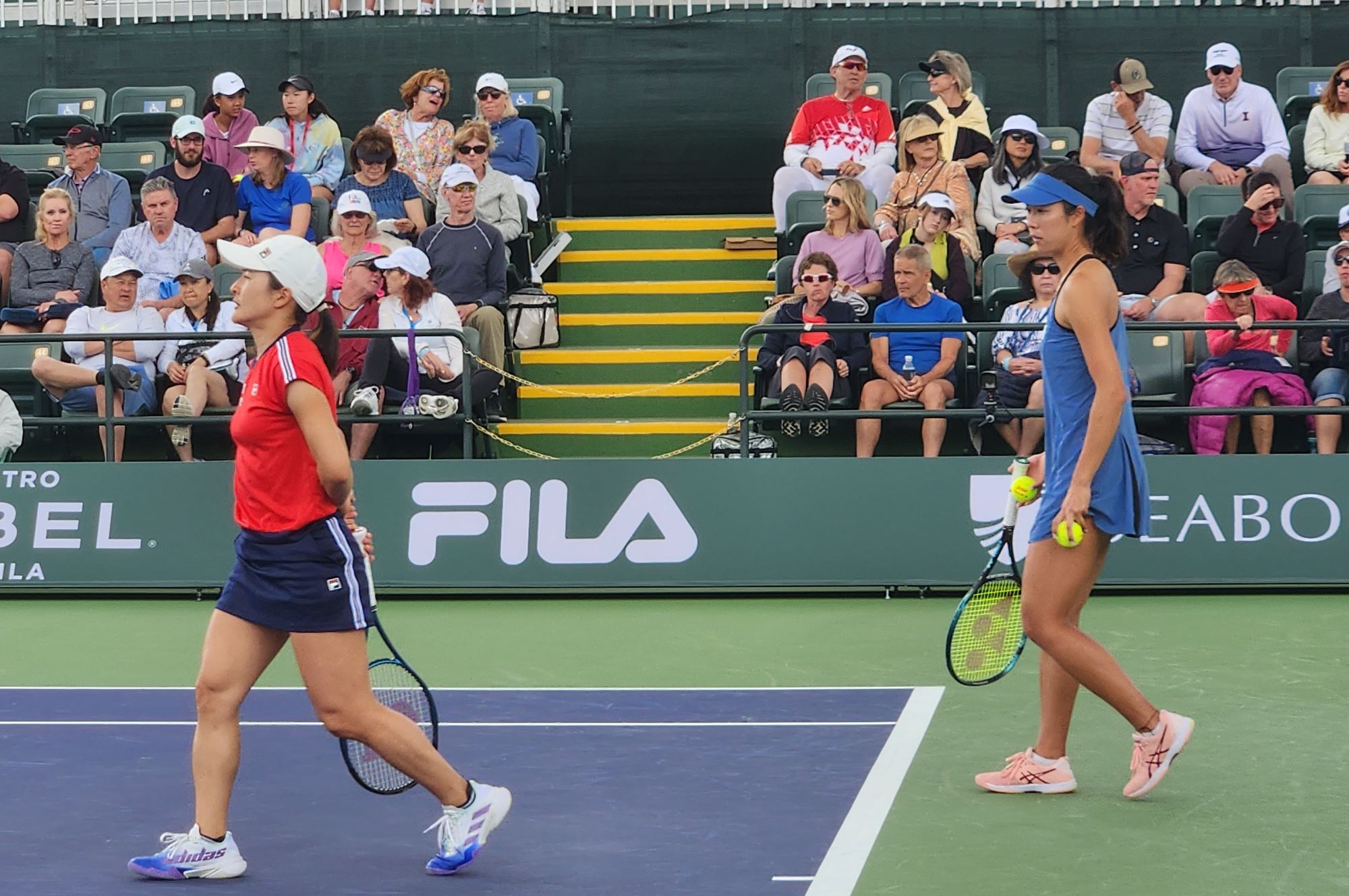
A few minutes into our interview, I posed the inevitable year-end question, which marks a critical time filled with unknowns for doubles teams deciding whether to stay together or jump ship to start fresh with a new partner. And even more so this year ahead of an Olympic year in 2024 when players often team up with fellow compatriots.
“What are your plans for the 2024 season?”, I asked. Shibahara then sighed and glanced at her partner with a half-smile.
“Unfortunately, Shuko and I are splitting up next year because I am going to focus more on singles,” Shibahara confessed. “I’ll still play doubles at the slams in 2024 and maybe the week before, but it was too tough to commit to both WTA and ITF events this past year.”
Backing Yourself in Singles: A Sacrifice of Prize Money & Perks
Similar to personal relationships, doubles partnership breakups are common on tour with many players often wondering if the grass is greener elsewhere. But in Ena Shibahara’s case, this was a “It’s not you, it’s not me” breakup situation.
Shibahara ended her 2023 doubles campaign ranked No. 14 in the world after she and Aoyama posted a stellar year highlighted by two WTA titles, a runner-up performance at the Australian Open, and a top 8 finish to qualify for the WTA Finals. Alongside Aoyama, Shibahara has won 10 WTA doubles titles over the last four years and achieved a career-high doubles ranking of world No. 4 in March 2022.
In light of her doubles success, Shibahara’s singles career unfortunately paid the price.
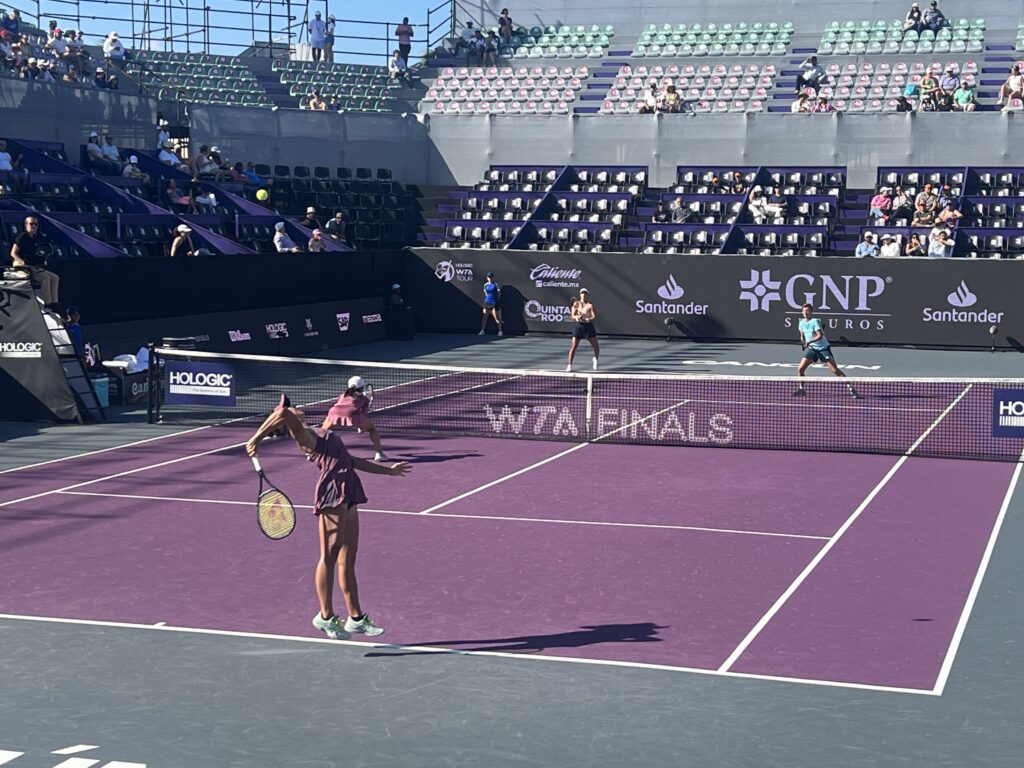
She finished the year ranked No. 552 with one ITF title and a 14-14 record. Although the records and title difference between singles and doubles might not seem too stark on paper, the prize money paints a different picture.
Shibahara earned $525,614 in 2023, of which only about $28,000 (5%) came from singles results. She earned the majority of her prize money from signature doubles performances at the grand slams and top-tier WTA events:
- Australian Open (finalist): $129,393
- Canadian Open (champion): $66,920
- WTA Finals (qualified): $63,000
- Indian Wells (semi-finalist): $61,775
Choosing to walk away from the lifestyle perks afforded by a top 20 WTA doubles player isn’t a decision Shibahara is taking lightly. Only at age 25, still considered fairly young in today’s game with many players’ careers now extending into their late thirties or early forties, she believes her singles ceiling can be much higher.
Shibahara’s best singles results of the year came in September at the Guadalajara Open, a WTA Premier 1000 event in Mexico. In the qualifying round, she scored a pair of impressive wins over two talented American players – No. 391 Whitney Osuigwe and No. 144 Sachia Vickery. In the main draw, she battled in a competitive match against former World No. 1 Karolina Pliskova but ultimately came up short, losing 7-5, 6-2.
One week of quality singles results, however, can provide the extra belief that players on the ranking fringes sometimes need to go all in on singles. This dilemma represents a broader theme in professional tennis that many top doubles players grapple with when their singles ranking lags severely behind their doubles ranking. At the top of the game, singles prestige and prize money are far superior to doubles.
For example, WTA singles players who fell in the first round of the 2023 U.S. Open earned $81,500, whereas those who fell in the doubles first round earned $11,000 (13.4% of singles).
Related Podcast
Ena Shibahara & Shuko Aoyama Interview: The top Japanese doubles team assesses their performance at the 2023 WTA Finals in a post-match interview.
But the journey breaking into the singles top 100 isn’t for the faint of heart mentally, physically, or financially. It’s what every player on the outside looking in dreams of accomplishing. At the top, however, there is finite space and resources to make a successful living on the singles tour.
With Shibahara’s current doubles rankings of No. 14 and singles ranking of No. 552, it’s simply impossible to pursue both disciplines well. Her singles ranking doesn’t allow her to gain entry into WTA qualifying draws consistently, which creates a scheduling nightmare that forces her to balance a full-time WTA doubles schedule while dropping down to play lower-tier ITF singles events during off weeks in doubles.
“I got hurt a few times last year because you have to play so many weeks when you try to juggle a full doubles schedule on the WTA Tour and singles schedule on the ITF circuit… I want to give myself the chance to do well in singles next year, so I’ll use 2024 as my opportunity to do that.”
– Ena Shibahara
Backing Yourself in Doubles: The Chance of Always Wondering “What If?”
At the end of the 2023 season, 28-year-old Ellen Perez finds herself in a similar predicament as Shibahara. Currently ranked No. 17 in doubles, Perez recently concluded one of her best career doubles seasons to date alongside partner Nicole Melichar-Martinez.
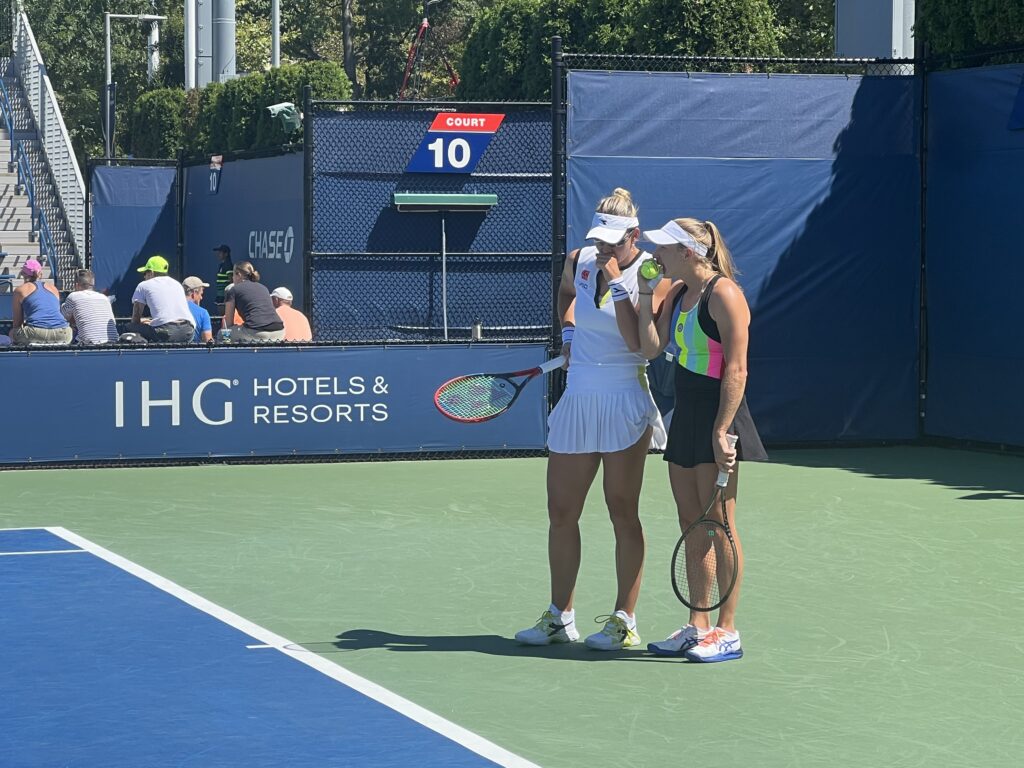
The Aussie-American duo finished 31-26 on the year with five runner-up finishes in Austin, Eastbourne, Cincinnati, Cleveland, and the WTA Finals in Cancun. After narrowly qualifying for their debut WTA Finals appearance together, Perez and Melichar-Martinez advanced to the championship match despite adverse playing conditions, where they fell short to Laura Siegemund and Vera Zvonareva.
Capturing the WTA Finals runner-up trophy, however, awarded Perez the biggest paycheck of her career to date, $157,500.
This result made a significant imprint on her 2023 earnings, which totaled $580,205. Of this amount, Perez earned nearly $528,000 in doubles – more than 90 percent of her season’s prize money – and $52,000 in singles.
While she continued reaching new heights playing a full-time doubles schedule, her singles ranking slipped over 100 spots from No. 363 to No. 494 by the end of the season. As a top 20 doubles player, the opportunity to compete on the sport’s biggest stages and earn significant prize money is a reward that Perez can’t justify giving up.
“One of the hardest things to do is juggling two rankings – especially if one starts to move further away from the other,” said Perez. “I don’t want to give up the big prize money potential in doubles and I also back myself to do really well with Nicole. I could either go to a slam or WTA 1000 and make more prize money with Nicole knowing we will perform well… or I could go to a low-level ITF tournament in a random location to make barely any money playing singles and still have a chance of losing early. The math just doesn’t add up.”
– Ellen Perez
The singles vs. doubles juggling act grew even more challenging for Perez in 2022 when she began playing doubles exclusively with Melichar-Martinez and her doubles career skyrocketed. For several years before, she successfully managed a top 50 doubles ranking and a top 200-250 singles ranking, which allowed her to enter most WTA singles qualifying events (where she was already playing doubles) and make a decent singles income on the side. But that all changed when she rose to the top of the doubles game last year.
“I got to a point where I lost a lot of singles ranking points all at once and started playing doubles full-time with Nikki. We had such a good run in 2022 and from there my doubles career really took off. At that point, I knew we had a really good thing coming and I began seriously considering going all-in on doubles.”
– Ellen Perez
The Opportunity Cost of Doubles Success
Perez first joined forces with Melichar-Martinez at the start of the 2022 clay season, but it wasn’t until the North American summer hardcourt swing that they caught fire. The new doubles duo posted an impressive six-week stretch of results that raised eyebrows across the WTA doubles circuit.
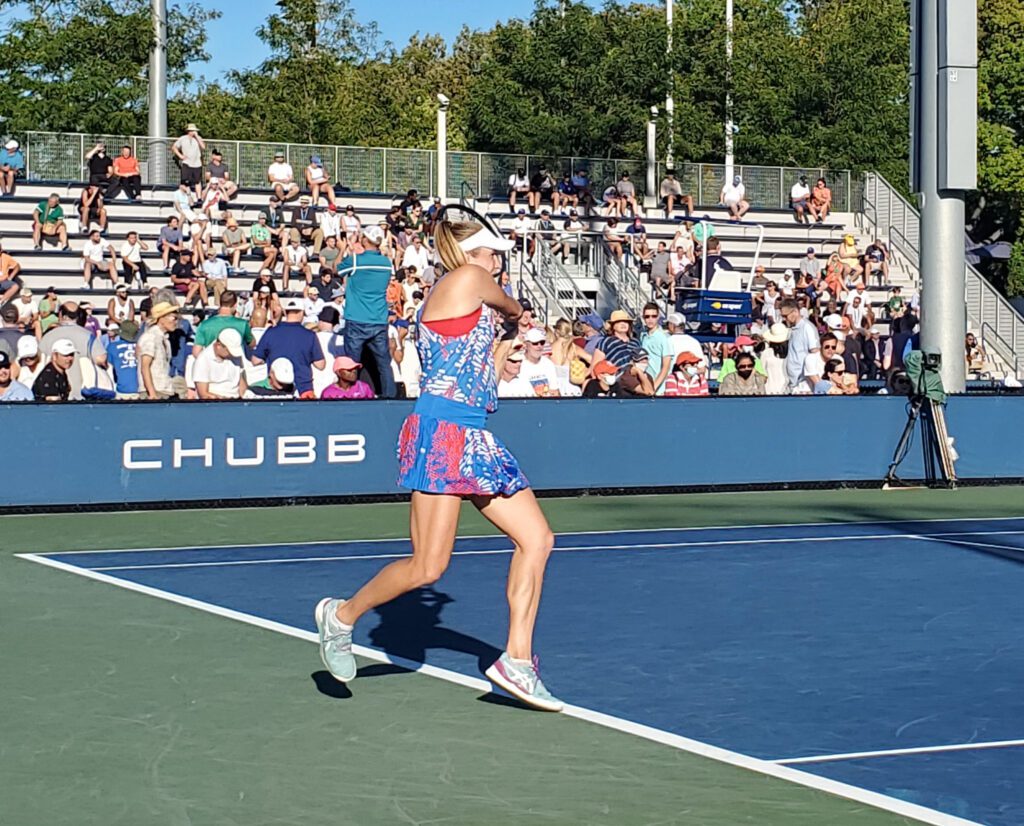
Their run included back-to-back finals in Toronto and Cincinnati, a WTA 250 title in Cleveland, a semi-final performance at the 2022 U.S. Open and another runner-up finish in Tokyo.
During this period, they went 19-4 (83%) and Perez racked up $173,750 in prize money over just six weeks. Meanwhile, her singles career took a backseat and, as a result, her ranking continued to slip.
Since committing to playing a full-time doubles schedule with Melichar-Martinez nearly 18 months ago, Perez has built a successful top 20 doubles career with a career-high ranking of No. 9 and nearly $800,000 in prize money. Over the last two seasons, however, her singles ranking fell over 300 spots from No. 192 at the beginning of 2022 to No. 494 at the end of 2023. This sums up the wildcard hand that Perez, Shibahara, and many other players on tour are dealt.
Related Podcast
Ellen Perez Interview: Ellen talks about what it was like being an alternate at the 2022 WTA Finals and how she balances singles vs. doubles.
The ranking slip is less a product of performance dips, but more a result of scheduling complexities when singles and doubles rankings aren’t properly aligned.
Other top 10 doubles players, including Coco Gauff, Jess Pegula, Barbora Krejcikova, and Elise Mertens, can more easily balance both disciplines since their high singles ranking allows them to play both events at the same tournaments.
For Perez and Shibahara, it’s more of a jigsaw puzzle trying to weigh the pros and cons of travel, prize money, and ranking points when building a tournament schedule. There’s no question, however, that Perez still enjoys her share of singles success during the weeks she can play.
At the Bank of Communications Zhengzhou Open in October, she scored impressive singles wins over No. 224 Ye-Xin Ma and No. 101 Tamira Korpatsch to qualify for the main draw. In the first round, she fell to No. 32 Anhelina Kalinina 6-1, 6-3, but walked away with confidence in her singles game and an $8,000 paycheck.
“When I do get a chance to play singles, I’m usually playing against someone ranked top 100 in the world because I’m playing at the occasional WTA qualifying event where I’m able to get in. These girls are playing singles all the time and sometimes I feel underdone a bit from not practicing as much. When I beat Tamira Korpatsch in China, however, she went onto win a WTA 250 event the following week. It was a nice reminder that I can still play singles and deserve to be among these top singles girls when I do.”
– Ellen Perez
Perez, Shibahara Take Different Crossroads in 2024
With respective singles and doubles rankings in equal territory, Shibahara and Perez find themselves at a similar career crossroads heading into the 2024 WTA season. But they plan to take two vastly different directions.
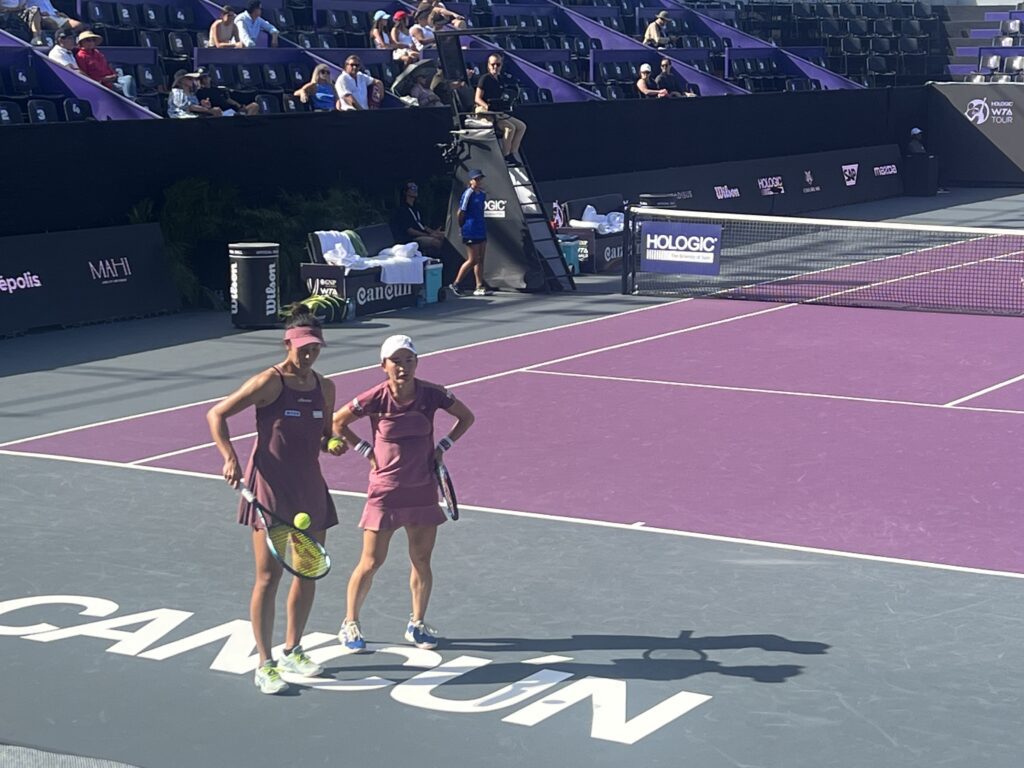
For Shibahara, the singles whisper is growing louder, and her 2024 singles-focused schedule will look much different than in 2023. This could mean skipping out on top-tier doubles events at the WTA Masters 1000 level like Indian Wells, Miami, Rome, and Madrid to instead play ITF events in smaller, often less desirable locations across the globe.
With this decision, she will likely forgo a significant amount of doubles prize money in the short term while committing to grind on the ITF circuit in hopes of propelling her singles ranking.
Most players and tennis industry experts consider a top 100 singles ranking as the threshold for when professional players “make it” from a financial standpoint. For Shibahara, that journey will mean climbing over 400 ranking spots to begin earning a sustainable living on tour as a singles player. But it’s a journey she’s willing to take.
“It’s sad – I hate to step away from the WTA Tour. If Shuko and I do get back together for the Olympics and play for Japan, I would love that. We always find the rhythm again right away, so I’m not worried about it, but it will depend closer to time based on how my singles progress is going. Hopefully one day soon I’ll play singles on the WTA tour.”
– Ena Shibahara
Perez, three years older than Shibahara at a slightly later stage of her career, backs her chances of going all-in on doubles and remains steadfast in her partnership potential with Melichar-Martinez. She and many others who follow the doubles game closely believe they can beat anyone on tour when firing on all cylinders.
That doesn’t mean Perez is completely calling it quits on her singles career though. She’s simply focused on enjoying life on tour whatever comes her way in doubles or singles.
“I want to keep chipping away at singles on the side because I still really enjoy it,” Perez added. “I’ve been through a lot of back-and-forth mind games between singles and doubles wondering what might happen if I got that one big singles result that could turn things around. Now I’m at a point where I’m okay with being complacent about where my singles ranking goes, because I know how high our ceiling is in doubles. I’m not willing to go back to ITF 60K or 25K events and travel to remote locations to work my way back up. It is what it is.
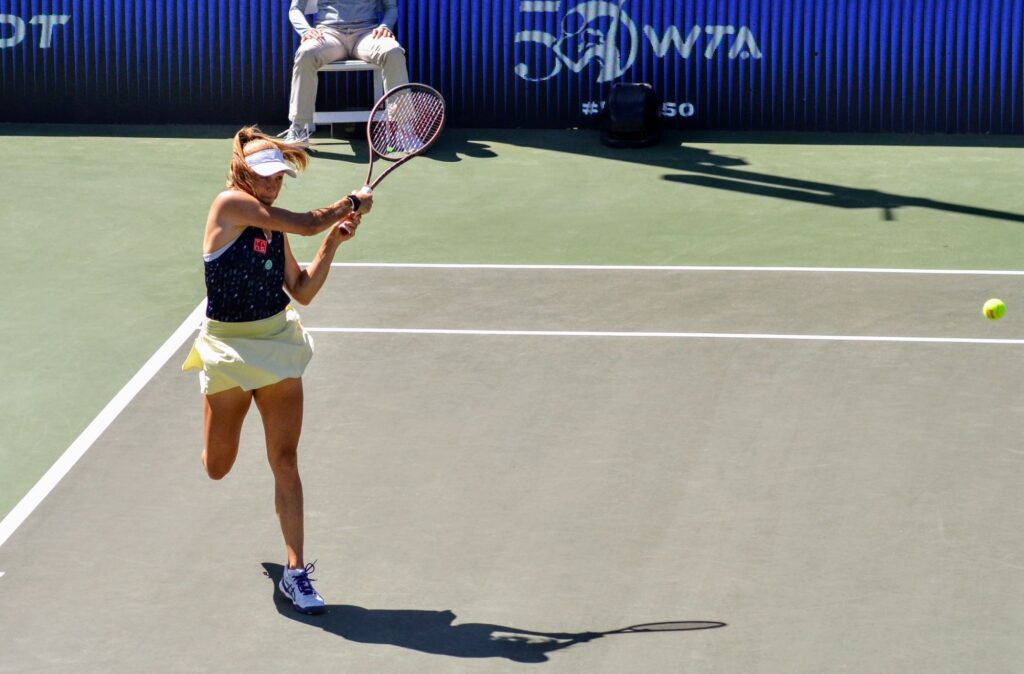
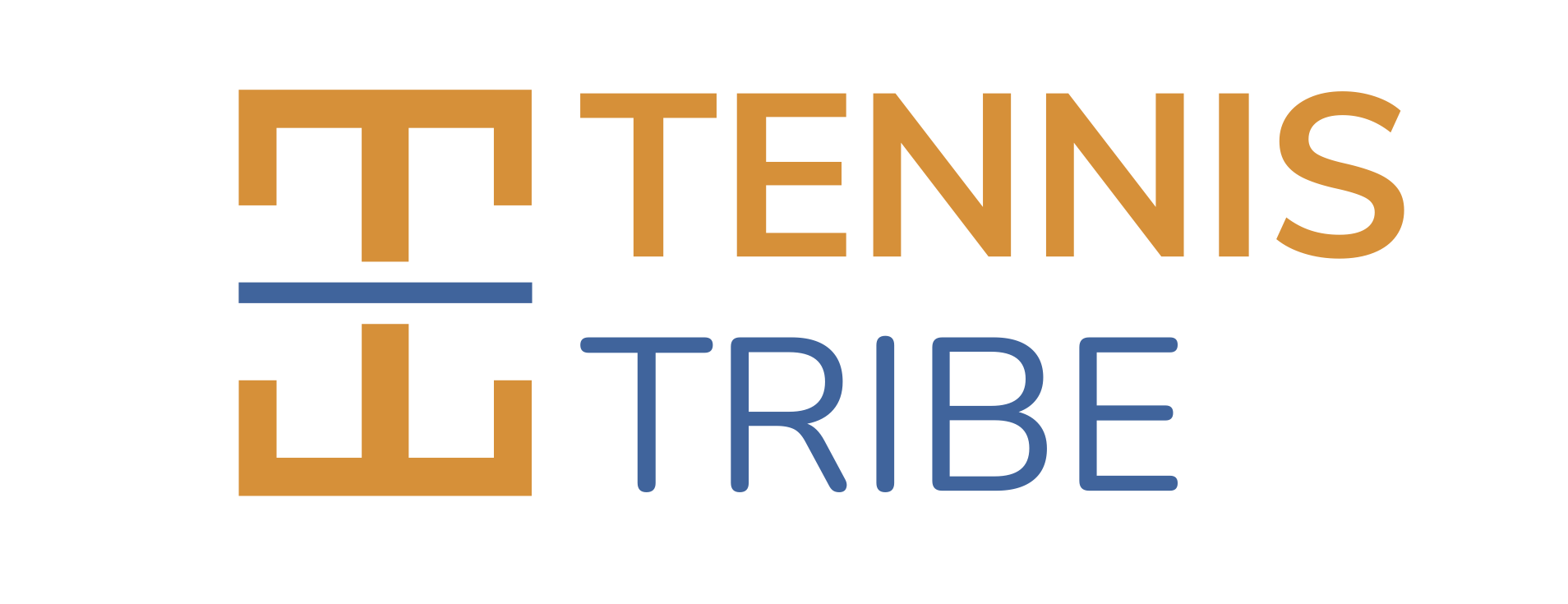
Leave a Reply